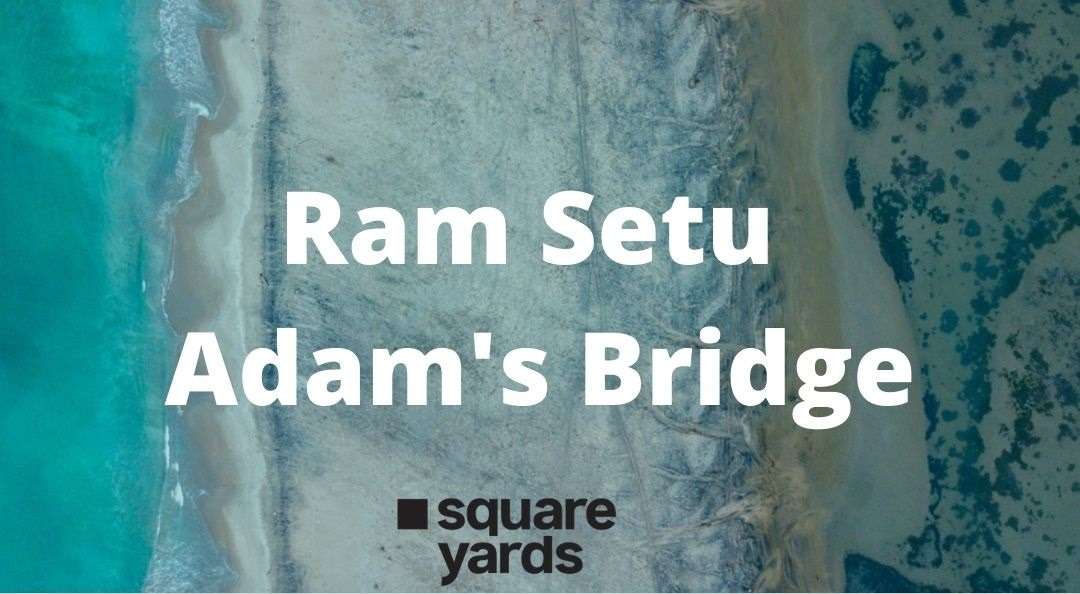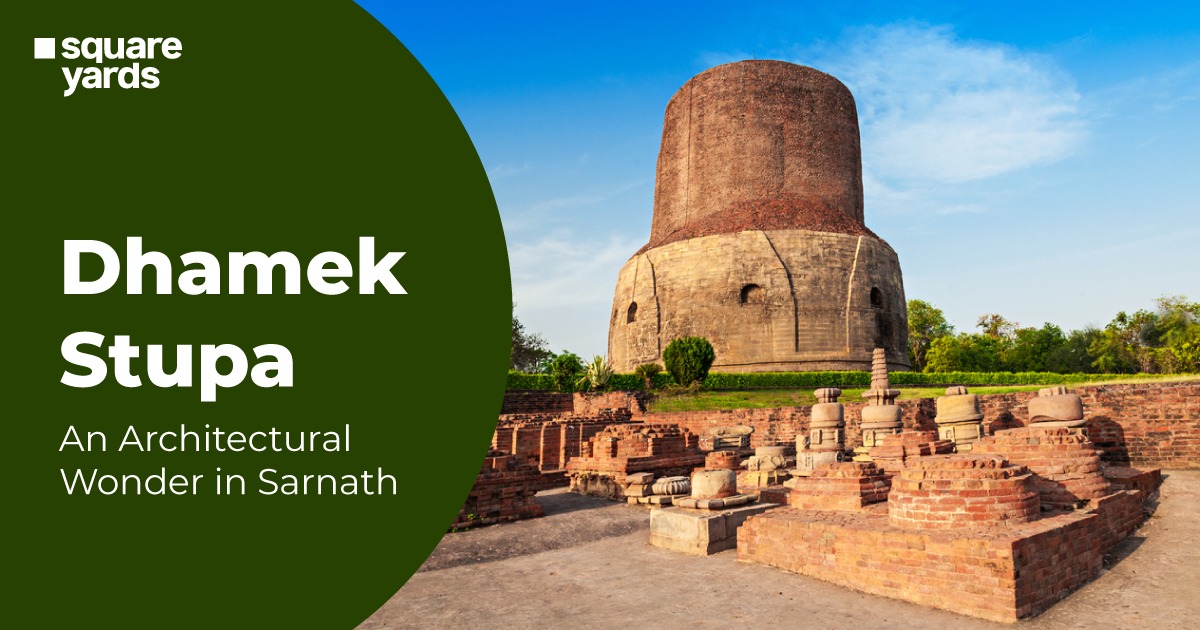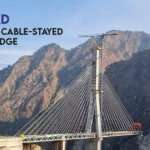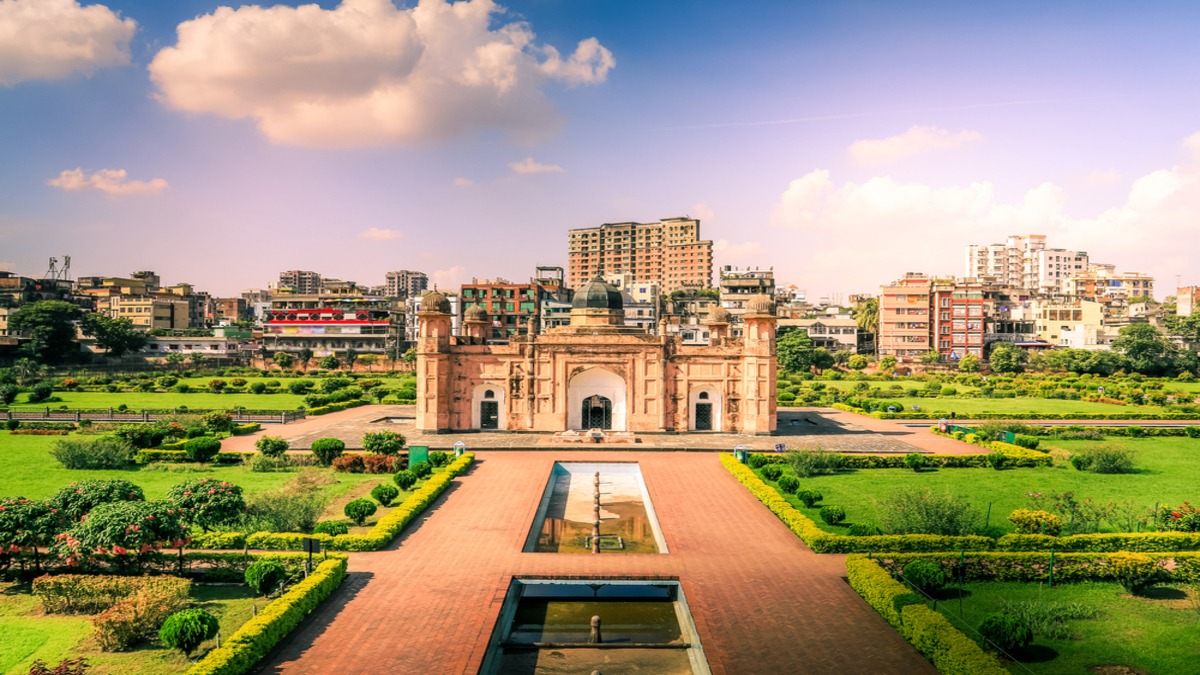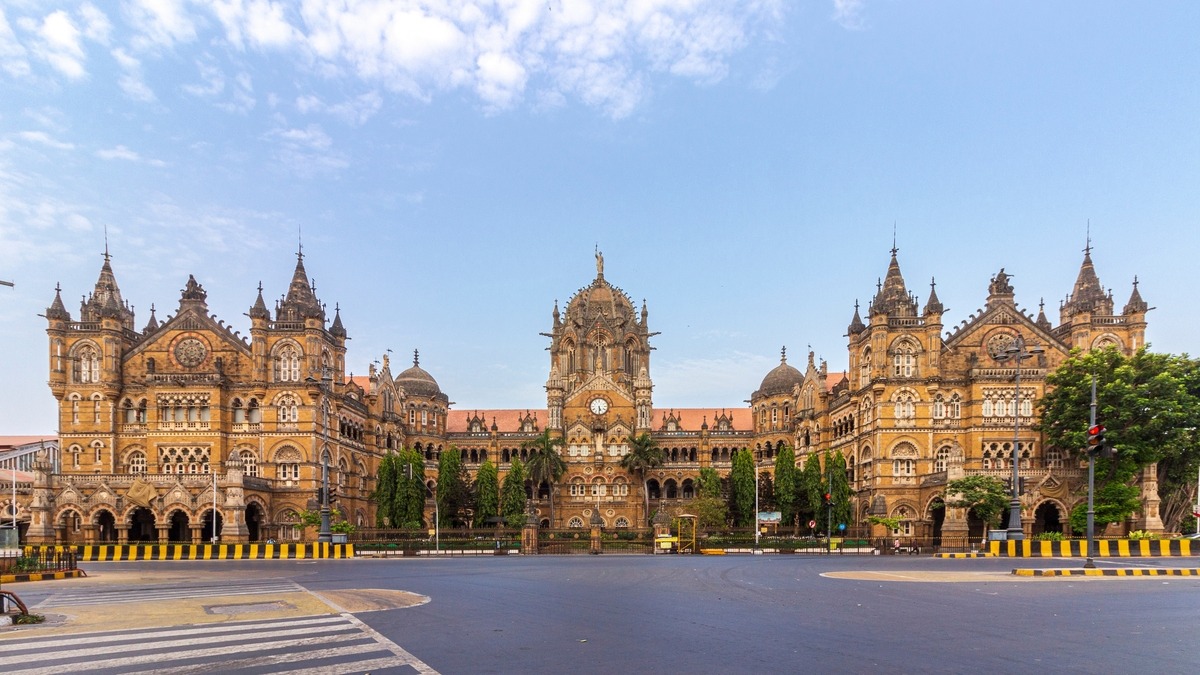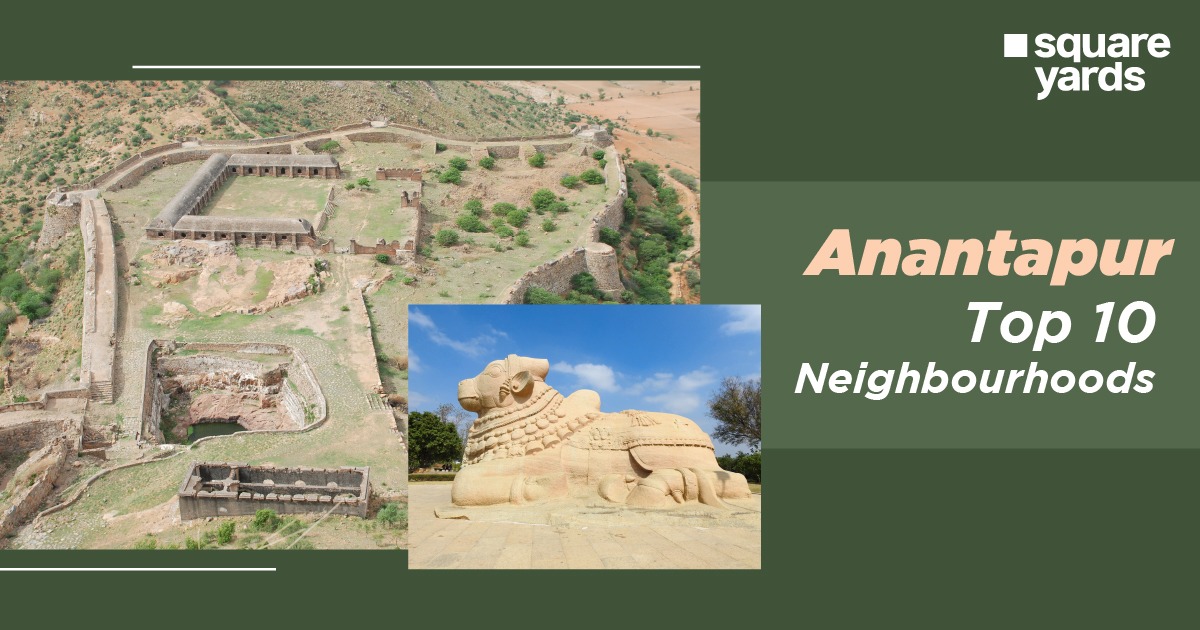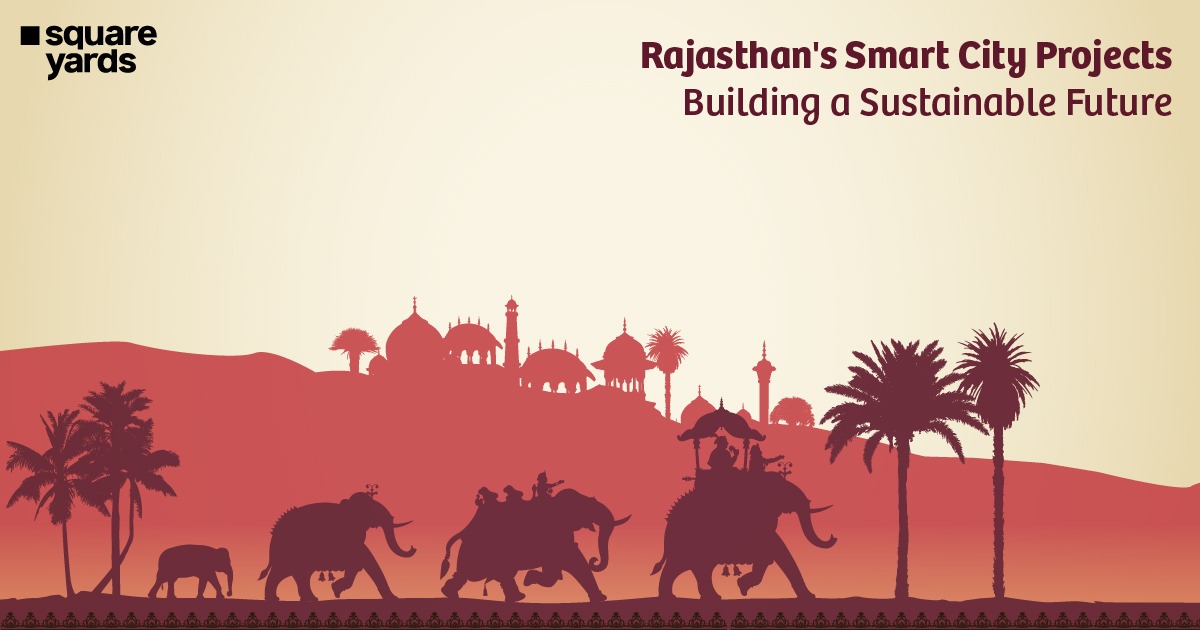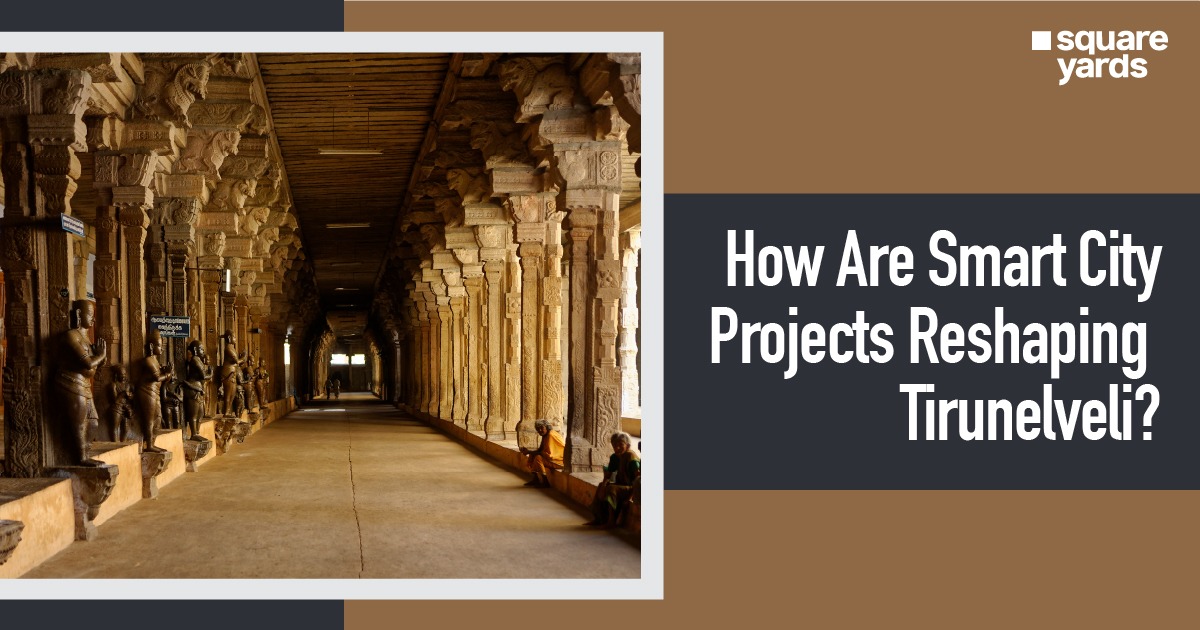Historical statues, monuments, and other structures are historically important, and some hold the religious sentiments of the people. Each of the historical structures has its value, which cannot be declined, destroyed, or forgotten. India, a nation that holds historical importance in every corner, has made development in the field of archaeology. One such mythological structure is the holy Ram Setu. This Setu is in existence for more than 2000 years.
Ram Setu is believed to be the path that Lord Rama walked with his Sena to reach Sri Lanka and save his wife Sita from the web of Sri Lanka’s king, Ravana. In this article, you will get to know every detail and steps that have been taken to find out the history behind this structure.
All About Ram Setu
There are very few structures that add a link between history and mythology and Ram Setu is one of them. This Rameshwaram bridge, also called Adam’s Bridge which is the path that Lord Rama walked with his Vanara Sena to reach Sri Lanka. And this Rameswaram to Sri Lanka distance was covered by Lord Rama and his followers after much effort to get back Goddess Sita.
Recently, the Indian government approved the exploration taking place underwater for studying and determining the exact age of the India Sri Lanka bridge. It will also focus on finding out the formation of this India Sri Lanka Bridge. This study, it will be found out and relate the Ram Setu bridge to the Ramayana period. At the same time, there is a demand to make this bridge a national monument that is still in its sub-judice state. Hence, with all these, it has become more important to find out the possibilities of linking this Indian mythological structure with the structures of the modern era.
Facts About Ram Setu
- The Ram Setu, also known as Adam’s Bridge, is similar to the causeway that connects India and Sri Lanka. The bridge begins from the Island of Pamban located in Tamil Nadu (India) to Mannar Island, located in Sri Lanka.
- This Ram Setubridge is 50 kilometers long on an approximate basis. Also, this bridge separates the Gulf of Mannar and the Palk Strait. The sea area around this setu is quite shallow, which ranges from 3 feet deep to 30 feet deep.
- Also, there is proof through geology that this setu was a land connection between the two nations (India and Sri Lanka).
- Until 1480, several scientific reports claimed that the Adam’s Bridge was constructed above sea level. But, because of the damage by a cyclone in that area, it damaged the bridge. The bridge was passable through foot until the cyclone hit that area.
- As per Oceanography, it is believed that the bridge is about 7,000 years old. This data tallies with the dating of carbon on the beach near Dhanushkodi and Mannar Island.
- The navigation of ships is nearly impossible because of the shallow seawater around the coral reef. This is the reason that forces the ships to take around and choose another route to reach Sri Lanka.
- According to many studies, it is shown that the bridge is built using shoals of limestone. These shoals are in a linear way of coral reefs. There are also some shreds of evidence that this setu is made of floating rocks, which are found scattered in Rameshwaram. It is also believed according to a theory that volcanic rocks can float on water bodies.
- Alfred Dundas Taylor conceived the Setusamudram Project in the year 1860, which was approved by the Indian Government in recent days. This project was proposed to furnish a shortcut way from the Pamban Island in India to Mannar Island, which is in Sri Lanka. However, as the environmentalists suggested, this project can destroy the natural reefs, which have been in existence for thousands of years. The Setusamudram project aimed to be executed by Pamban Pass deepening. In this way, the Ram Setu will not face any damage. But, this project is still on hold.
Importance of Ram Setu in Mythology
Valmiki’s Ramayana, Hindu epic mythology, was the first to mention Ram Setu. This Setu is believed to be constructed with the efforts of Lord Rama’s Vanara Sena and instructions were given by Nala. This Rameshwaram bridge was constructed for Lord Rama to reach Sri Lanka and save his wife Sita from the captivity of King Ravana. According to the epic mythology of India, the Rama Setu was built using the floating stones on which the name of Lord Rama was engraved and the engraved name of Lord Rama on the stones made them unsinkable. According to ancient mythology which mentioned that Lord Rama prayed to the ocean for letting him and his Sena travels from India to Sri Lanka to rescue his wife Sita from the grip of Sri Lanka’s King, Ravana.
Rama Setu is also called Ram Setu, Adam’s Bridge, Setu Bandha, and Nala Setu. This bridge is one of the most prominent historical and archaeological evidence of Ramayana. Ram Setu is one of the holy sites as per Hindu mythology. Hence, no bridge should be constructed over this holy site.
Ram Setu – Man-Made or Not?
Much research and studies are going on for understanding Ram Setu’s true nature. Raj Bhagat Palanchimay, who is a GIS worker as well as an analyst of remote sensing at World Resources Institute, added a tweet about the animations of the satellite. This animation explains the formations between the two nations – India and Sri Lanka.
Why is Ram Setu also called Adam’s Bridge?
This bridge first appeared in the Book of Roads and Kingdoms by Ibn Khordadbeh (c. 850). In this book, Ram Setu is mentioned as ‘Bridge of the Sea’ and ‘Set Bandhai’. While the other sources described this Setu in context referring to Adam, who is crossing over the bridge to reach India from Sri Lanka after he has been expelled from Eden’s Garden, which gives the bridge its name ‘Adam’s Bridge. Apart from this incident, according to a British Cartographer in the year 1804, he prepared a map in which he called this area the Adam’s Bridge.
Expedition Project of Ram Setu
In March 2021, the expedition of the Setu was carried out by archaeologists and scientists. It was done to explore the chain of shoals, which is made of limestone that connects Rameshwaram (India) and Sri Lanka. This expedition is aimed to understand the attributes of rocks made of limestone along with the geological transformation of the rocks and other different features of eight kilometers long Ram Setu.
The Indian Council of Historical Research received many proposals in the last few years. However, this is the first proposal that has been accepted by the board. Not only this, but the board has also provided adequate funding to the expedition of the bridge. The main purpose of the expedition is to find out whether the setu is man-made and put a full stop to this long debate over this mythological bridge.
ASI Approved Further Research on Rameshwaram Bridge
The Central Advisory Board of Archaeology, which is a government body that came out under the Archaeology Survey of India (ASI), in 2021 has approved the proposal for the project of exploration about Ram Setu. This exploration project will focus on finding out when and how the Rama Setu was formed. The research underwater has already begun in 2021.
This Ram Setu research is being taken out by the Council for Scientific and Industrial Research (CSIR). The Goa-based institution, the National Institute of Oceanography (NIO), is also focusing on this project along with CSIR to find every detail behind the construction as well as the formation of the Adam’s Bridge. This study will also focus on a few more points that include the submerged habitations that might have existed around this bridge.
The research vessel ship, named ‘Sindhu Sankalp’ or ‘Sindhu Sadhana’, by the National Institute of Oceanography is being used for the study of this project by gathering the samples of 35 – 40 meters deep sediments under the sea level. This research is solely based upon the archaeological thermoluminescence and antiquities that date for the geological scale of time. Also, the Radiometric Techniques are being used for determining the exact age of this structure, which is believed and reported to consist of the pumice stones and corals. These corals contain minerals, such as calcium carbonate. These minerals will help in determining the exact age of the Ram Setu bridge.
Puzzling Facts About Adam’s Bridge
Even after the debate whether the Ram Setu is man-made or not, a piece of strong and concrete evidence has still not been found. However, there are a few mysterious facts about the bridge that you might not know. These facts are as follows:
- Rama Setu is also known and called Nala Setu or Adam’s Bridge. The former name of this Setu has been derived from its origin from a text in Islamic. This Islamic text has mentioned that Adam’s Peak is present in Sri Lanka. This bridge is also called Nala Setu as the architect who designed the limestone shoal bridge was named Nala.
- According to the studies of oceanography and the beaches’ carbon dating, it has been revealed that there is a timeframe that coincides with the Ramayana’s time frame.
All About Setusamudram Project
For the protection of Ram Setu, a petition was signed and submitted to the Supreme Court. Taking further the petition, the Supreme Court asked the Indian Government whether they wish to remove the Rama Setu from the project of Setusamudram. The government explained and told the court that this project is not going to harm or touch the Ram Setu.
In a separate petition submitted to the Supreme Court, the Ex-vice chancellor and Senior Academic of Alagappa University, Dr. A. Ramaswamy has mentioned that the Adam’s Bridge does not meet the statutory ‘ancient monuments’ tag requirements, and the Supreme Court does not hold any power to label this Setu as a ‘National Monument’.
Dr. A. Ramaswamy, who is also the president of Dravidian Historic Research Centre (DHRS) in Madras, has quoted that according to a 130-year-old German Research has concluded that the Adam’s Bridge is not a man-made structure. Dr. Johnnes Walther, professor of Jena University in Germany, had taken up the research project on the Ram Setu in the year 1891, said Dr. Ramaswamy.
SSCP or Setusamudram Shipping Canal Project had proposed for establishing a connection between the Bay of Palk and the Mannar Gulf. The connection will be established by the creation of a shipping canal between both countries. Setusamudram is the name of that sea between the two nations, India and Sri Lanka and the depth of this sea is less than 10 meters. As this region is shallow, India still does not have a continuous channel for navigation that would connect the East and West Coast of the nation. The SSCP proposed the creation of a channel that would connect the two coasts of India directly. This will also reduce the distance between Chennai and Cape Comorin. At the same time, it will also help in preventing the ships from getting circumvented towards Sri Lanka. Hence, the usual time of reaching one coast from the other will also be reduced with the help of the Setusamudram Shipping Canal Project.
Engineering Students Will Be Studying Ramayana and Ram Setu
The government of Madhya Pradesh has taken the initiative for revising its curriculum and the revised curriculum will be for the undergraduates in the state. The engineering students will include Ram Setu studies in their curriculum.
Save the ‘Ram Setu’ Campaign
On 27th March 2007, the Save Ram Setu Campaign was launched to save the Ram Setu. This is the day that is popularly celebrated as Ram Navmi day. This campaign was organized by several international organizations that felt the urge to save Adam’s bridge. According to these organizations, the Setusamudram project can harm Ram Setu and have a negative impact on nature. Even though the Setusamudram project was assessed thoroughly, protestors still believe that the assessment of the project was carried out before the tsunami hit the area. And in the recent scenario, the project could prove to be disastrous for both marine life and the environment. Also, the construction of the shipping canal can bring negative effects on the livelihood of fishermen who reside in this area. It will also disrupt the conch shells industry. Further adding, the group of organizations also supported that the sacredness of the bridge is important. And that this structure is proof of mythology and has immense sentimental value with a rich heritage for the Hindu society, which they cannot let get destroyed.
Below are the claims made by the Save Ram Setu Campaign:
- The campaign asked for the complete withdrawal of the Setusamudram Shipping Canal Project (SSCP) from scooping the Setu site. They also asked to remove all the tools and equipment from that area.
- Establishment of an independent Commission by the Indian government for overlooking the different rounds of consultations. The stakeholders who were not being included in the last consultations should be included in the upcoming one. Also, all the risks, livelihood risks, and environmental risks should be considered, which were completely ignored in the previous rounds of consultations.
- The SSCP should take the accountability and responsibility of wounding the religious sentiments of the Hindu Society.
You may also like to read about :
| State | Monuments |
| Agra | Red Fort Agra |
| Delhi | Red Fort |
| Delhi | Tughlaqabad Fort |
| Agra | Taj Mahal |
| Hyderabad | Golconda Fort |
| Delhi | India Gate |
| Kolkata | Victoria Memorial |
| Kolkata | Marble Place |
| Ladakh | Leh Palace |
FAQs:
What NASA says about Ram Setu?
After the circulation of news that NASA imagery has been doing rounds, the agency made a statement that they never said the Ram Setu was 1.75 million years old or that this historical and mythological bridge is man-made.
Can we walk on Ram Setu now?
Yes, even if the water is shallow, one can still walk on the Rameshwaram Setu. But one can walk only for a certain distance on this bridge.
Did NASA confirm Ram Setu?
As per NASA, the Ram Setu images that have been taken by its astronauts do not prove the existence of Rama Setu. Even after taking images of the limestone shoals for years, NASA has not found any concrete evidence for the existence of Adam’s Bridge.
Did Rama destroy Ram Setu?
According to the senior advocate, Fali S. Nariman, Lord Rama was the one to destroy the Ram Setu on his return from Sri Lanka.
Where is Rama Setu located?
Rama Setu is located on the south-eastern coast of Tamil Nadu in India and the north-western coast of Mannar Island in Sri Lanka.
How was Ram Setu destroyed?
According to the temple records, it is believed that the Ram Setu was above sea level to 1480. But, when a cyclone hit the area during that time, the setu broke down.


